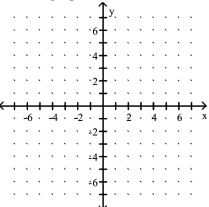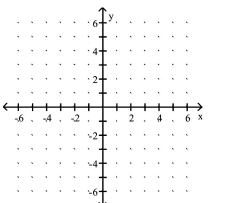A) years
B) years
C) years
D) years
Correct Answer

verified
Correct Answer
verified
Multiple Choice
Write the equation in its equivalent logarithmic form. -
A)
B)
C)
D)
Correct Answer

verified
Correct Answer
verified
Multiple Choice
Use the One-to-One Property of Logarithms to Solve Logarithmic Equations Solve the logarithmic equation. Be sure to reject any value that is not in the domain of the original logarithmic expressions. Give the exact answer. -
A)
B)
C)
D)
Correct Answer

verified
Correct Answer
verified
Multiple Choice
Solve the exponential equation. Use a calculator to obtain a decimal approximation, correct to two decimal places, for the solution. -
A)
B)
C)
D)
Correct Answer

verified
Correct Answer
verified
Multiple Choice
Find the domain of the logarithmic function. -
A)
B)
C)
D) or
Correct Answer

verified
Correct Answer
verified
Multiple Choice
Use properties of logarithms to condense the logarithmic expression. Write the expression as a single logarithm whose coefficient is 1. Where possible, evaluate logarithmic expressions. -
A)
B)
C)
D)
Correct Answer

verified
Correct Answer
verified
Multiple Choice
Solve the problem. -Use the formula to find the intensity on the Richter scale, given that amplitude a is 207 micrometers, time between waves is seconds, and is 2.7. Round answer to one decimal place.
A)
B)
C)
D) 7
Correct Answer

verified
Correct Answer
verified
Multiple Choice
Graph the function.
-Use the graph of to obtain the graph of .

A) ![]()
B) ![]()
C) ![]()
D) ![]()
Correct Answer

verified
Correct Answer
verified
Multiple Choice
Use properties of logarithms to expand the logarithmic expression as much as possible. Where possible, evaluate logarithmic expressions without using a calculator. -
A)
B)
C)
D)
Correct Answer

verified
Correct Answer
verified
Multiple Choice
Solve the problem. -The logistic growth function models the number of people who have become ill with a particular infection weeks after its initial outbreak in a particular community. How many people became ill with this infection when the epidemic began?
A) 70 people
B) 57,000 people
C) 813 people
D) 814 people
Correct Answer

verified
Correct Answer
verified
Multiple Choice
Solve the exponential equation. Use a calculator to obtain a decimal approximation, correct to two decimal places, for the solution. -
A)
B)
C)
D)
Correct Answer

verified
Correct Answer
verified
Multiple Choice
Evaluate or simplify the expression without using a calculator. -
A)
B)
C) 4
D)
Correct Answer

verified
Correct Answer
verified
Multiple Choice
Use properties of logarithms to expand the logarithmic expression as much as possible. Where possible, evaluate logarithmic expressions without using a calculator. -
A)
B)
C)
D)
Correct Answer

verified
Correct Answer
verified
Multiple Choice
Use Natural Logarithms Evaluate or simplify the expression without using a calculator. -
A) 112
B)
C)
D)
Correct Answer

verified
Correct Answer
verified
Multiple Choice
Graph the function.
-Use the graph of to obtain the graph of .

A) ![]()
B) ![]()
C) ![]()
D) ![]()
Correct Answer

verified
Correct Answer
verified
Multiple Choice
Use properties of logarithms to expand the logarithmic expression as much as possible. Where possible, evaluate logarithmic expressions without using a calculator. -
A)
B)
C)
D)
Correct Answer

verified
Correct Answer
verified
Multiple Choice
Solve the problem. -The logistic growth function describes the population of a species of butterflies t months after they are introduced to a non-threatening habitat. What is the limiting size of the butterfly population that the habitat will sustain?
A) 440 butterflies
B) 70 butterflies
C) 5 butterflies
D) 880 butterflies
Correct Answer

verified
Correct Answer
verified
Multiple Choice
Graph the function.
-Use the graph of to obtain the graph of .

A) ![]()
B) ![]()
C) ![]()
D) ![]()
Correct Answer

verified
Correct Answer
verified
Multiple Choice
Use the Definition of a Logarithm to Solve Logarithmic Equations Solve the logarithmic equation. Be sure to reject any value that is not in the domain of the original logarithmic expressions. Give the exact answer. -
A)
B)
C)
D) )
Correct Answer

verified
Correct Answer
verified
Multiple Choice
Use Compound Interest Formulas Use the compound interest formulas A -Find the accumulated value of an investment of $1230 at 6% compounded annually for 5 years.
A) $1646.02
B) $1552.85
C) $1525.20
D) $1599.00
Correct Answer

verified
Correct Answer
verified
Showing 121 - 140 of 268
Related Exams